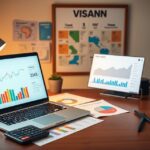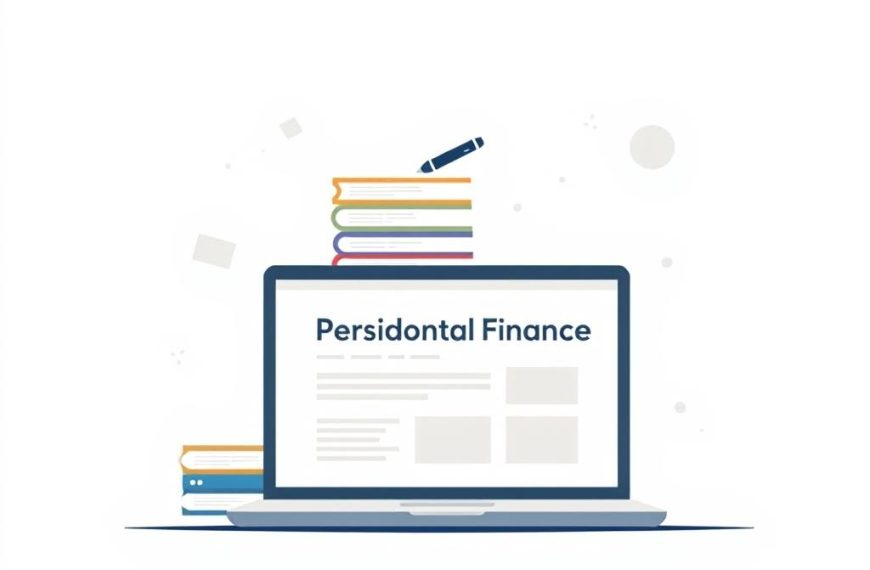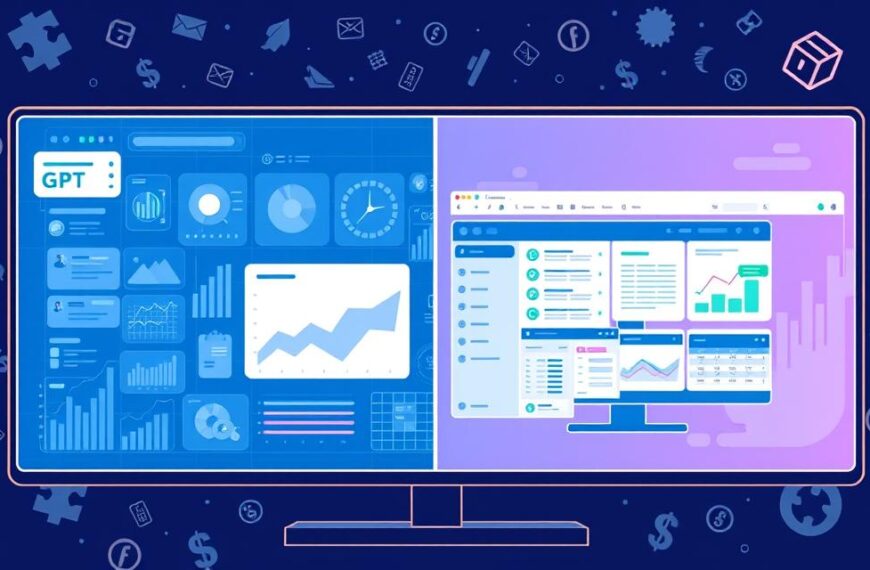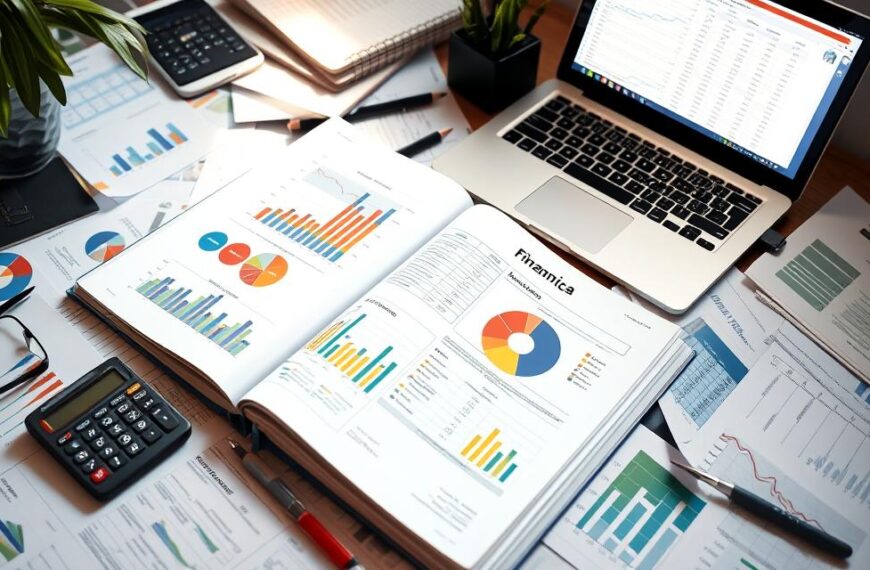The importance of green economics is more evident as we delve into modern finance. A+ Personal Finance shows the way forward by blending sustainability with personal finance. It’s about balancing your own finances while helping the planet.
Getting to grips with sustainable finance is important. A study by U.S. Bank found that around half of us use cash less often. As our lives and needs change, so should our financial strategies to match our evolving lifestyles.
Public banks play a big role in sustainable growth. They offer the tools and money needed for green investments. A survey found that 55% of SMEs see lack of money as a big hurdle to fighting climate change. With 70% of them needing more funds, it’s clear banks are key in supporting green finance.
Adopting eco-friendly finance strategies is wise. It helps both our wallets and the world. This piece digs into the best ways to invest greenly, the financial dangers of climate change, and how everyone has a part in moving to a greener economy.
The Importance of Going Green in Economics
Today’s economy greatly benefits from understanding green economics. This system focuses on sustainability, marrying economic growth with environmental care. It seeks to lessen environmental harm while supporting steady economic progress.
In recent times, green economics has become more crucial. People see the value in combining financial choices with green practices. This leads to rewards beyond just following rules.
Understanding Green Economics
Green economics blends environmental thought with traditional economic strategies. It looks at both financial outcomes and environmental effects of investments. For example, a U.S. study showed that green-certified buildings attract higher rents and sales than those not certified.
This proof shows the financial benefits of adopting green approaches in investments.
The Role of Sustainability in Economic Decision-Making
Sustainability is essential in economic choices, especially in managing assets. Companies now aim for sustainability certificates to boost property values. Research shows that in Europe, energy-efficient buildings perform better market-wise than less efficient ones.
Studies indicate that properties with green certifications can see value increases from 16% to 25%. This underlines the economic advantage of sustainable investments.
Broadly, sustainability efforts reshape how stakeholders interact. The rise of ESG frameworks changes how the biggest financial bodies allocate funds. ESG guidelines urge businesses to weigh environmental issues, pushing for both compliance and long-term gains. By adopting sustainable approaches, companies gain a competitive edge.
| Finding | Description |
|---|---|
| U.S. Sustainable Buildings | Higher rents, occupancy rates, and selling prices compared to non-certified buildings. |
| European Asset Performance | Assets with low EPC ratings underperform significantly in the U.K. and the Netherlands. |
| Green Premiums | Property values increased by 16% to 25% due to sustainability certifications. |
| ESG Framework Impact | Changes in capital allocation decisions among major financial services firms. |
| Renewable Investment Success | Unlisted infrastructure equities from renewables outperform listed ones with robust returns. |
Merging green economics with sustainability offers not just ethical benefits but a strategic edge too. Moving towards eco-friendly economic decisions builds resilience, highlighting the vast importance of going green.
Key Strategies for Green Investment
Green investments offer both money gains and help our planet. By putting money into renewable energy and sustainable farming, we can make a difference. These efforts tackle climate change and ensure everyone has enough to eat.
Investment in Renewable Energy
Investing in renewable energy has really taken off. From 2017 to 2021, the money in green bonds jumped from USD 141.5 billion to over USD 500 billion. This shows more people see renewable energy as good for the economy. Now, there’s about USD 1.5 trillion in green debt, proving a strong move towards eco-friendly projects.
Private sectors are big players, holding 63% of green bonds. These bonds fund clean energy and make investments clearer. With 88% of investors wanting to put more into green bonds, the trend is clear. People are choosing to invest in a healthier planet.
Benefits of Sustainable Agriculture
Farming in a sustainable way is key for food security and less harm to the environment. Farmers can lower their carbon emissions and fight climate change. Investing in such farming matches global aims like the Paris Agreement.
These investments encourage farming that’s good for nature. They help in producing more food and support local economies. Focusing on sustainable farming helps us withstand climate challenges, ensuring enough food for everyone in the future.
Impact of Climate Change on Financial Stability
Climate change and financial stability are deeply connected, presenting complex challenges. As climate risks grow, they threaten investments and the solvency of institutions. They come from both extreme weather and the shift to a low-carbon economy, disrupting financial systems.
Risks Associated with Climate Change
Financial institutions must understand that climate risks fall into known financial risk categories. The Basel Committee is addressing these threats by reviewing frameworks for climate-related risks. Banks now need to factor these risks into credit assessments and conduct in-depth due diligence for creditworthiness.
- Climate risk drivers align with traditional financial risk categories.
- Financial institutions are urged to integrate climate-related risks in their operational frameworks.
- External ratings of covered bonds need to conservatively reflect creditworthiness in light of climate risks.
Case Studies of Climate-Driven Financial Crises
Recent case studies underline the importance of addressing climate risks promptly. The European Commission’s Action Plan promotes including ESG factors in business practices. The SFDR requires companies to implement sustainability measures, essential in today’s finance world.
| Year | Event | Impact |
|---|---|---|
| 2021 | Basel Committee Reports | Increased focus on identifying gaps in frameworks for climate-related financial risks. |
| 2021 | SFDR Implementation | Companies mandated to incorporate ESG measures into financial reporting. |
| 2020 | Market Volatility | Severe financial repercussions due to extreme weather affecting supply chains. |
As markets change, the Basel Committee’s ongoing advice aims to boost strategies for managing climate risks. This approach will help keep the financial system stable during climate crises. It ensures institutions are prepared for these challenges.
The Private Sector’s Role in Green Finance
The private sector plays a key role in tackling our world’s environmental issues. More investors now focus on sustainability, making it important for financial businesses to fund green projects. They work with governments, companies, and communities to build a strong financial system for sustainable growth.
Mobilising Capital for Green Projects
Private investments are crucial for green projects. Georgia needs around USD 8.3 billion for energy efficiency by 2030. Another USD 10.6 billion is required for other environmental efforts. This shows big chances for investors interested in sustainability.
Banks in Georgia help by offering green finance with support from international institutions like EBRD and EIB. This improves fund availability and builds investor trust. It helps the green finance sector grow.
Challenges Faced by Financial Institutions
But, there are hurdles. Laws can make it hard to focus resources on green initiatives. A low demand for green financial products adds to the problem. Also, Georgia depends heavily on imported green technologies, affecting local project funding.
Small businesses often struggle to get loans, a common issue worldwide. Even with lower loan interest rates, many businesses lack the know-how to manage finances in this new area.
In conclusion, the private sector’s involvement is vital for sustainable growth. By working together and facing challenges, financial institutions can push forward in funding green projects. This enhances the impact of private investments in sustainability.

| Green Financing Requirements in Georgia (2017-2030) | Amount (USD) |
|---|---|
| Energy Efficiency | 8.3 billion |
| Non-Energy Greenhouse Gas and Land Use Emission Reduction | 10.6 billion |
| Hydropower | 2.4 billion |
| Climate Change Adaptation | 1.5 – 2.0 billion |
| Green Technologies Import Dependency | 90% |
| Retail Credit Penetration | 32% of GDP |
| Retail Loans as % of Credit (2017) | 55% |
A+ Personal Finance Going Green Economics Answer Key
At the core of the A+ Personal Finance answer key is the merging of sustainable actions with financial planning. This approach gives people practical steps to follow. It’s not just about saving money but also helping the environment.
Integrating Sustainable Practices in Financial Planning
One key part of sustainable financial planning is understanding your income sources. This includes salaries, bonuses, and dividends. By knowing these, you can budget for both your financial aims and the planet’s well-being. It’s crucial to invest in green projects and think carefully about what you buy. This approach saves money now and creates a healthier environment for the future.
Strategies for Reducing Carbon Footprint Through Budgeting
Effective budgeting can help cut your carbon footprint by smartly managing your expenses. Split your spending into cash and credit sections. Choose products and energy that are better for the environment. Opting for green savings options, like eco-friendly bonds or funds, also helps reduce harmful emissions.
| Spending Category | Strategy for Reduction | Impact on Budget |
|---|---|---|
| Cash | Environmentally friendly purchases | Reduces overall spending |
| Credit | Invest in green companies | Long-term savings growth |
| Investing | Focus on sustainable options | Promotes carbon footprint reduction |
Linking personal finance decisions with *sustainable financial planning* can greatly lower your carbon footprint. This smart method boosts both your finances and the planet’s health. It’s a win-win, leading to a circle of positive financial and environmental impacts.
Public Policy and Green Finance Initiatives
Public policy is key in driving green finance initiatives. It helps create supportive frameworks for sustainable investments. Through laws, governments can boost funding for eco-friendly projects.
The Role of Government in Promoting Sustainability
Governments are now seeing the value of adding sustainability into their financial plans. They make rules that attract private investment into green projects. For example, China leads in green banking, as shown in a 2021 scorecard. But, the USA and South Korea need to catch up, both scoring 11.
Focusing on green priorities is vital. It means not investing in fossil fuels. Instead, finance should back eco-friendly solutions. Policymakers need to consider the risks of supporting fossil fuel projects.
Legislation Supporting Green Investments
Several laws help green finance grow worldwide. Taiwan’s action plan introduced 25 steps to boost eco-friendly finance. This plan supports green businesses and helps issue green bonds.
Green bonds are booming, growing from under $1 billion in 2008 to $143 billion in 2018. They offer good returns and help the planet. Mostly, governments issue these bonds.
| Country | Green Bond Issuance (2018) | Score on Green Central Banking Scorecard |
|---|---|---|
| China | Notable leader | 50 |
| USA | $11 billion | 11 |
| South Korea | Significantly lower | 11 |
| France | Strong performance | Varied |
As policies and laws change, teamwork between government and business is crucial. This partnership can increase green finance and help fight climate change. It’s about reaching our global sustainability goals.
For more info on this subject, the Finance Guide for Policymakers has lots of insights. It talks about how to get more investment into clean energy and green infrastructure.
Global Insights on Sustainable Finance
In recent years, the world of sustainable finance has grown a lot, especially since 2017. People from different areas are coming together to work on being more sustainable. When we look closely at how countries are trying to be greener with their money, we see both good chances and tough spots. Different countries are trying to make their finances more eco-friendly. But, they don’t all agree on what that means exactly. This makes things a bit messy in the financial world.
Comparative Analysis of Green Finance Initiatives Worldwide
Around the world, there are many different green finance projects, shaped by what each region thinks is most important. Some countries are really good at creating green bonds and loans. But, others find it hard because not enough people want to buy these eco-friendly financial products. There’s also a problem with how we decide if these green initiatives are financially safe. Sometimes, the ratings that tell us if an investment is good or bad don’t take environmental risks into account. This can make some green projects look less trustworthy than they actually are.
The United Nations has a big plan called the 2030 Agenda for Sustainable Development. It lists seventeen goals to make the world a better place. Slowly, companies are starting to think about the planet in their plans. Yet, many are still only focusing on short-term goals instead of thinking about the future. For investors who really care about the earth, finding businesses that are truly committed to being green is a big challenge.
Trends in ESG Investing
There’s a growing trend in ESG investing, where people want their money to support sustainable efforts. Investors are now asking more questions about how companies handle environmental issues. They want to know about things like where materials come from and how much pollution is being made. A big change is coming in 2024 with the ISSB Standards. These will help make it easier for investors to understand how green a company really is. This means making better choices will be easier.
Even with all this good progress towards greener finance, there are still big hurdles. Things like getting everyone on the same page and finding clear eco-friendly investments are difficult. To get more people to put their money into green projects, we might need to make some changes. Things like clearer rules and better ways to talk about green investments could help a lot.
Conclusion
As we finish our look at green economics, it’s clear that we need sustainable finance. This isn’t just a passing trend. It’s essential for a stable future. Reports like the Non-financial Report 2023 and Sustainability Insights 2023 show how important it is. Companies like the KION Group are leading the way. They’re aligning their work with sustainability goals and are open about their efforts.
Climate change and greenwashing are big challenges today. They show why clear rules and honest practices are needed in finance. The KION Group is praised for its trustworthy reporting and following environmental standards. This builds trust and helps the economy in the long term.
In the end, working together is key in green economics. Businesses, governments, and people must unite to solve environmental problems. This will ensure growth that’s good for the planet. As finance changes, adopting sustainable strategies is crucial. It will lead to a world that’s both greener and wealthier.
FAQ
What is green economics?
Green economics is a way of thinking about money and nature together. It looks to make positive changes for our planet through smart financial decisions. This approach helps us use resources wisely while keeping the economy strong for a long time.
How does sustainability influence economic decisions?
Sustainability makes us think differently about where to put our money. It means picking investments that do good for the world and also make financial sense. This balance improves how companies perform and lowers the risks.
What are some effective strategies for green investments?
One good move is to put money into clean energy sources like wind or solar power. These investments fight climate change and can pay off well.
Another is betting on ways to farm that are good for the earth. This helps feed more people and cuts down harmful emissions.
What risks are associated with climate change in finance?
Climate change brings dangers like wild weather that can destroy value. There are also risks in changing to a greener economy that need careful handling. These changes can affect investments and the health of financial institutions.
What role does the private sector play in green finance?
Businesses have a big part in driving money into green projects. They can make a huge difference. But they often face hurdles like laws that don’t help or not enough people wanting to buy green.
How can individuals incorporate sustainable practices into their financial planning?
People can choose to spend and save in ways that are better for the earth. This means thinking about the ecological effects of their financial actions. It also involves making choices that keep their money safe and growing in an eco-friendly way.
What is the government’s role in facilitating green finance?
Governments can set rules and create a supportive space for green money moves. This help brings more green investments to life. It’s about making the future more sustainable with the right policies.
How does global sustainable finance differ across regions?
Around the world, sustainable finance takes many forms. Each area has its own way of supporting the green economy. Even so, there’s a growing trend of investing in ways that are good for the planet. This shows more markets are getting behind sustainability.

















